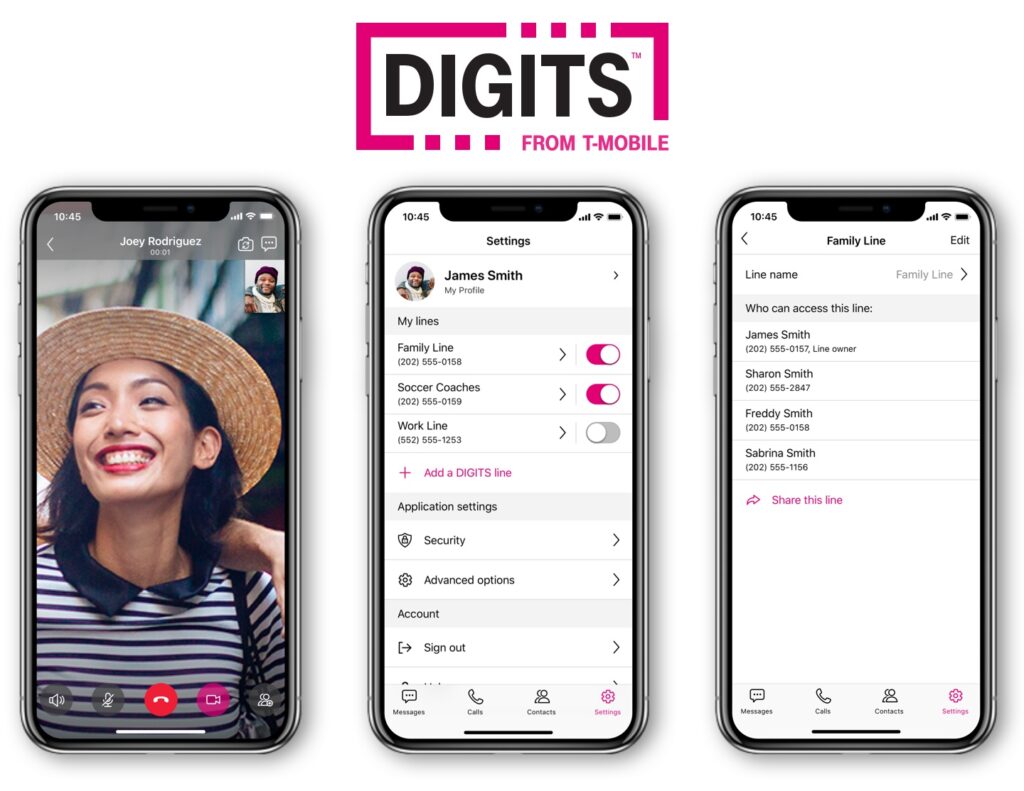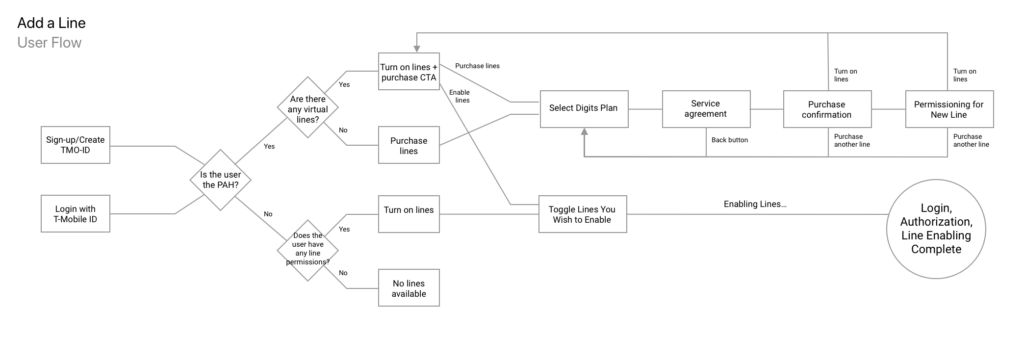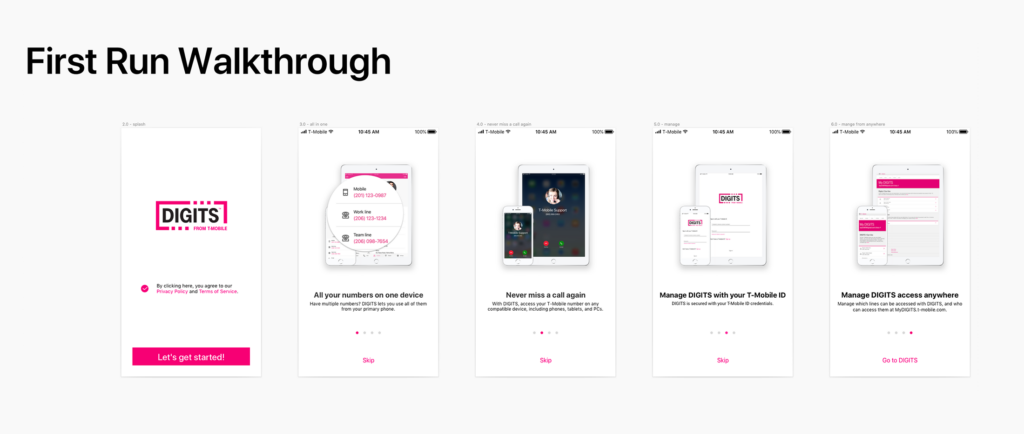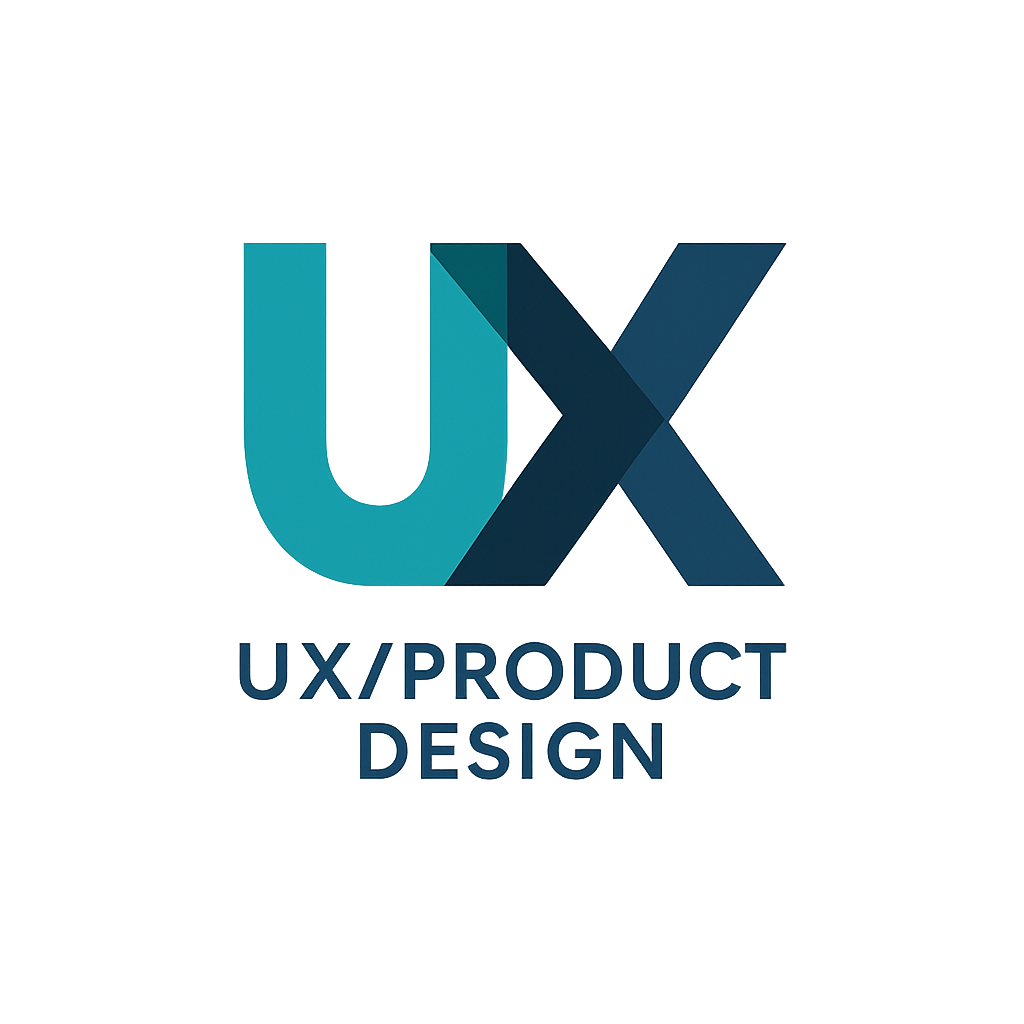
As the UX lead on T-Mobile DIGITS, I was responsible for end-to-end design, from early requirement conceptualization, to final production-ready asset delivery. Requirement intake, vetting, rewriting, and refinement was the first step during which I interfaced directly with the product owners, the engineering principals, and the marketing leads to ensure the revised requirements met their goals for the release.Project Directive:
Create a groundbreaking app that extends rich Messaging and Calling functionality from your phone number to any Android device, iOS device, or device with a web browser. In essence, build a virtual version of your phone so its capabilities can be used from nearly anything with an internet connection.
My Role:
UX Design Lead, Product Designer
Responsibilities:
• Served in numerous design capacities from Pre-release Beta client to current production release stream
• Ongoing feature exploration and development with product teams
• Working with cross-org Product Owners to solidify release features and requirements
• Managed design production and delivery from external design vendor
• Manage handoff of assets to development and provide continual guidance throughout development phases
• Work with QA team to identify and resolve bugs and UX issues as they arise
Digits Task Flow Maps


Once the high-level requirements were established, I lead a design team in transforming those requirements and stories into a cohesive user experience. Initially we designed a series of wireframe prototypes for key customer workflows in order to efficiently present our design concepts to stakeholders, gather feedback, and iterate on these designs as we honed in on the ideal experience. In most cases, high fidelity screens were mocked up and in-depth clickable prototypes were built utilizing Invision in order to present the UX to various stakeholders in a way where they could experience the designs and the interactions in an environment that mimics a native mobile app. In the cases where the story was a less complex design or a visual update, we relied on high fidelity static screens for presentation and sign-off.

Once the high level approvals were reached, we produced hundreds of pixel-perfect screens across multiple platforms, the results from which were able to be be sent directly to the development teams via Invision for their initial scoping. During this phase, I built out a design library inflight to support my production team’s efforts and allow them to efficiently build, maintain and deliver those hundreds of screens in production-level fidelity. Additionally, I updated the product’s existing, informal visual style guide to incorporate any changes we were making as well as incorporating design changes from previous iterations that, for various reasons, hadn’t yet been incorporated into the styleguide.
Design Component Library

Once the design production phase was complete, I worked directly with the development teams to ensure that they fully understood the designs and the mechanics underpinning the UX decisions that were made during the design phase. I handed off any required assets and worked in tandem with the Dev team, supporting their efforts and addressing any issues that arose during their development sprints. After main development wrapped, I worked directly with the QA teams to validate the pre-production builds against the design targets to ensure the optimal UX was implemented.
As DIGITS continued to evolve, I worked hand in hand with the product leadership, our support teams and our development teams to identify deficiencies, address bugs, and plan for future product enhancements on a daily basis.
